Washington, D.C., the nation’s capital, is no stranger to hot weather. As the mercury climbs, residents and visitors alike find themselves seeking ways to cope with the intense summer heat. The city is renowned for its historical landmarks and cultural significance, drawing tourists from across the globe even during the hottest months. While exploring the Smithsonian museums or wandering through the National Mall can be a delightful experience, the scorching temperatures pose significant challenges. But fret not, for the vibrant city offers numerous solutions and activities to combat the oppressive heat. As this article delves into the dynamics of hot weather in Washington, D.C., it explores inventive ways to stay cool, the influence of climate on local activities, historical anecdotes, and helpful tips for an enjoyable summer in the capital.
The Dynamics of Washington, D.C.’s Hot Weather
From May to September, Washington, D.C. is known for its high temperatures and humidity levels, making it one of the hottest periods in the city. While the historical average temperatures hover around 89°F (31°C) in July, heatwaves can push temperatures well into the 100°F (37°C) range. The increased heat in recent years has been noteworthy, challenging residents and tourists to adapt. The heat doesn’t just trail off at nighttime, either; the city often remains warm even after the sun sets, keeping the atmosphere heavy and humid.
One of the primary factors contributing to D.C.’s oppressive heat is its proximity to the Potomac River, coupled with the lack of coastal breezes that might offer relief in other coastal cities. The urban landscape, replete with buildings and pavements, absorbs heat throughout the day and releases it slowly at night—commonly referred to as the “urban heat island” effect. Additionally, climate change trends have intensified the extremities of summer, leading to more frequent and more extended spells of hot weather.
To bring these concepts to life, consider Emma, a local amateur historian who prefers afternoon strolls through the city. During the hottest days, she pivots to morning or evening outings to avoid the sun’s harsh rays. Emma finds the city’s numerous shaded parks like Rock Creek Park provide a respite from the heat, offering trails lined with towering trees that promise cooler air.
Historic climate records also play a vital role in assessing the trends and preparing for future weather conditions. By examining data, city planners and meteorologists work to improve urban infrastructure to mitigate heat impacts, such as constructing more green spaces or upgrading public transportation to offer better cooling systems.
| Month | Average High (°F) | Average Low (°F) | Rainfall (inches) ☔ |
|---|---|---|---|
| May | 75 | 57 | 3.9 |
| June | 84 | 66 | 3.5 |
| July | 89 | 71 | 3.7 |
| August | 87 | 69 | 3.6 |
| September | 80 | 63 | 3.9 |
Staying informed about daily weather updates is made easier through various services. Websites like washingtondcview.com provide comprehensive information on current weather conditions, alerts, and future forecasts. Such updates ensure that both locals and tourists can plan their days wisely, armed with knowledge about temperature changes and impending weather events.
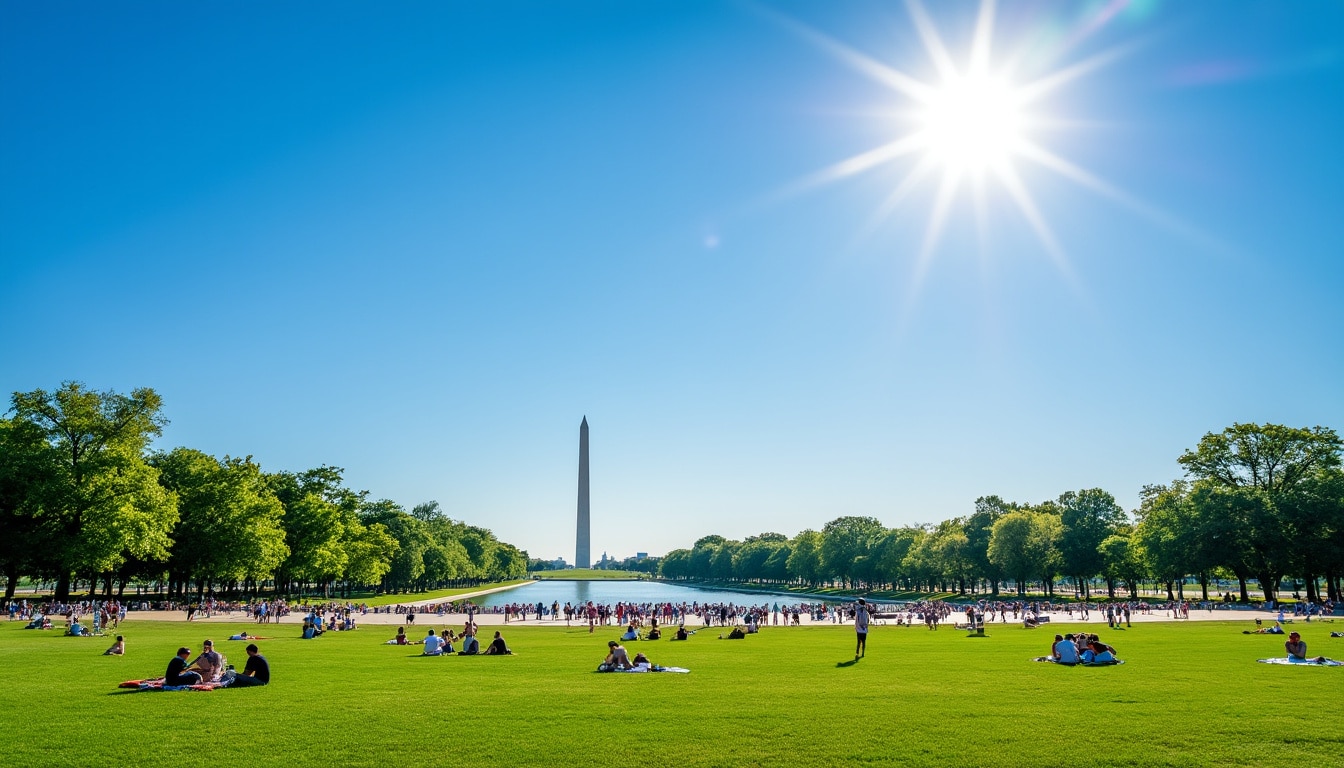
Heat Accumulation and Health Impacts
With temperatures soaring in Washington, D.C., understanding the health impacts associated with heatwaves becomes critical. Heat exhaustion and heat stroke are significant health risks, particularly for vulnerable populations like the elderly, young children, and people with existing health conditions. Symptoms can include heavy sweating, weakness, dizziness, and confusion, necessitating immediate action to cool down. To spread awareness, local health advisories often emphasize hydration, suggesting water-rich beverages like Ice Mountain or electrolyte-balancing drinks like Gatorade to maintain the body’s fluid balance.
Moreover, the UV index during peak summer months increases the risk of sunburn and long-term skin damage, highlighting the need for proper sun protection. Sunscreen brands like Coola offer products that not only shield the skin but also moisturize, catering to those with sensitive skin. It’s crucial to reapply sunscreen regularly, especially after swimming or excessive sweating, to maintain protection against harmful UV rays.
Whether you’re strolling along the National Mall or lounging in one of the city’s many parks, wearing a hat and sunglasses, seeking shade, and staying hydrated are essential strategies for mitigating the effects of D.C.’s summer sun. The need for such precautions is emphasized when considering heat-related statistics, where data underscores a rise in heat-related illnesses during the summer months.
Activities to Beat the Heat in Washington, D.C.
In the heart of summer, when the city’s heat challenges comfort, Washington, D.C. offers a myriad of engaging indoor and outdoor activities that promise to cool residents and visitors alike. While stepping inside the air-conditioned tranquility of museums like the Smithsonian or the National Gallery of Art offers a perfect retreat, the city also hosts water-based activities along the Potomac River that provide both relief and adventure.
Families and tourists might consider embarking on a river cruise, where breezes over the water and stunning views of the Lincoln Memorial create a memorable experience. Swimming enthusiasts can enjoy the diverse selection of public pools scattered across D.C., each equipped with facilities ensuring a pleasant afternoon of splashing away the heat.
For those seeking a chilly treat, Washington, D.C. boasts a delicious array of ice cream shops. Iconic brands like Ben & Jerry’s offer refreshing flavors, perfect for a sunny day. Georgetown’s waterfront area, famous for its picturesque scenery, is abundant with ice cream parlors and cafes, serving frosted delights that bring instant relief from the bustling summer crowds and the surrounding warmth.
When the sun reaches its zenith, heading to air-conditioned cafes is another favored option. Chains like Starbucks or local favorites provide refreshing iced coffees and blended cocktails, turning any afternoon break into an instant cool escape.
- 👟 Visit the air-conditioned Smithsonian museums
- ⛵ Enjoy a cruise on the Potomac River
- 🏊 Cool off in public swimming pools
- 🍦 Explore the ice cream shops in Georgetown
- ☕ Take a break in a cool café for iced beverages
Considering the nuanced aspects of staying cool, these activities not only bridge the gap between comfort and culture but also offer plenty of opportunities to engage with D.C.’s unique charm.
Creative Cooling Techniques
Among D.C. residents, innovative approaches to staying cool during heat waves are continually evolving. Wearing lightweight and breathable clothing, such as light-colored garments made of cotton, helps maintain a comfortable body temperature. Flip-flop brands like Havaianas offer both comfort and style, making summer strolls more enjoyable.
Locals frequently utilize window-based cooling systems and fans to circulate air throughout homes, promoting a cooler environment indoors without heavy reliance on air conditioning. Additionally, rooftop gardens and shaded patios serve as trendy cooling retreats, offering spaces to unwind amidst nature while evading direct sunlight.
Visiting frosty treat stalls around the city also scores high on the to-do list; not just for icy delights, but for the quick chill they often bring on a sweltering day. Places like Frosty Treats vending trucks, stationed strategically across bustling areas, provide quick, cold refreshments that are an idyllic fix for those needing an immediate cool down.
Challenges of Hot Weather for D.C. Residents
The challenges presented by the heat in Washington, D.C. are vast, especially considering the city’s infrastructure and transportation systems. Unlike many cities, D.C. does not have a plentiful coastal breeze, which complicates heat dissipation and leads to prolonged discomfort for its residents. The urban heat island effect also plays a significant role, as the sprawling concrete landscape traps heat, extending warm conditions well after sunset.
For residents, navigating public transportation during such warm conditions presents its own set of hurdles. While modern advancements have led to improvements in HVAC systems on buses and trains, the surging demand during peak hours often results in crowded and stuffy environments. Practical solutions like switching up the commute to non-peak times or utilizing shaded bus stops can offer modest relief from the day’s heat.
| Challenge 🌡️ | Impact on Residents | Proposed Solution |
|---|---|---|
| Urban Heat Island Effect | Increased night-time temperatures | Expand green spaces 🌳 |
| Infrastructure Strain | Heat stress on buildings | Implement energy-efficient designs 💡 |
| Transport Overcrowding | Sweltering commutes | Promote off-peak travel 🚌 |
Moreover, hydration stations and free water bottle refills at places like Chick-fil-A emphasize hydration, encouraging residents to carry beverage containers to combat dehydration amidst the intense heat. Facilities that offer shaded seating areas also contribute to increasing overall comfort for urban inhabitants.
Community initiatives are increasingly pushing for more trees and canopies along streets to provide shaded walkways, highlighting the importance of urban planning in improving life quality in the sweltering summer months. Such measures not only alleviate immediate thermal discomfort but hold long-term benefits by enhancing the cityscape and biodiversity.
Understanding the Historical Context of Washington, D.C.’s Climate
Exploring the historical aspects of Washington, D.C.’s climate reveals a city shaped significantly by its weather patterns. Established in 1790, climate considerations were integral to its development, with summers always presenting unique challenges. Architecturally, many early buildings featured high ceilings and multiple windows, facilitating ventilation and offering respite from warm temperatures.
Today, as climate change brings new patterns and more frequent heatwaves, understanding these historical facets offers insights into potential adaptive measures. D.C.’s past is rich with anecdotes of exhausting summers where community adaptation and urban lethargy frequently intersected. For instance, historical records indicate the pivotal role of shaded porches during warm months, heralding these spaces as quintessential household extensions.
Turning to examples such as Theodore Roosevelt Island, visitors can embrace nature’s cooling capacity while reflecting on history. This outdoor sanctuary, dedicated to the 26th president, serves as a symbol of conservation efforts and cooling refuge amidst the dense heat. It stands as a testament to nature’s enduring role in urban comfort and the essence of enjoying outdoor spaces safely.
- 🏛️ Influences of historic architecture on climate adaptation
- 🌱 Role of Theodore Roosevelt Island in modern eco-conservation
- 📜 Historical anecdotes and summer adaptation stories
As this historical narrative underscores, the interplay between weather and lifestyle has inherently influenced the city’s growth trajectory, emphasizing that lessons from the past can guide modern solutions amidst evolving climate challenges.
For further insights into how Washington, D.C.’s climate has evolved over time and how it influences current environmental strategies, the website washingtondcview.com serves as a valuable resource.
The Role of Local Government and Community Efforts
Beyond historical adaptation, the role of local government and community efforts in responding to D.C. summer heatwaves cannot be understated. Programs aimed at expanding tree canopies, increasing awareness of extreme heat preparedness, and promoting sustainable urban planning underline the importance of collective action in safeguarding community health.
Efforts to upgrade public parks with fountains and water features not only enhance aesthetic appeal but play a functional role in alleviating high temperatures. Additionally, the community’s endorsement of environmental policies demonstrates a unified stance towards sustainable cooling solutions.
Through participatory planning and leveraging updated climate data, D.C. residents exemplify resilience by fostering a cityscape that respects both its history and the necessary innovations for a more sustainable future. With shared initiatives and ongoing projects, the capital continually adapts its strategies to both honor its roots and embrace the realities of a changing climate landscape.
FAQs on Washington, D.C.’s Hot Weather
- How do tourists typically dress in D.C. during the summer?
Tourists often choose lightweight and breathable fabrics, pairing stylish accessories like hats or sunglasses while carrying sunscreen and water bottles to remain comfortable. - What are some quick ways to cool down in the city?
Seeking air-conditioned venues, enjoying cold treats from ice cream parlors, or taking a river cruise are popular ways to beat the heat swiftly. - Are there seasonal events affected by extreme heat?
Certain outdoor events may be rescheduled during extreme heat, but the vibrant indoor cultural scene remains active, offering fantastic alternatives.
With the wealth of options available, maximizing enjoyment of Washington, D.C., even in the heat of summer, becomes an exciting pursuit.
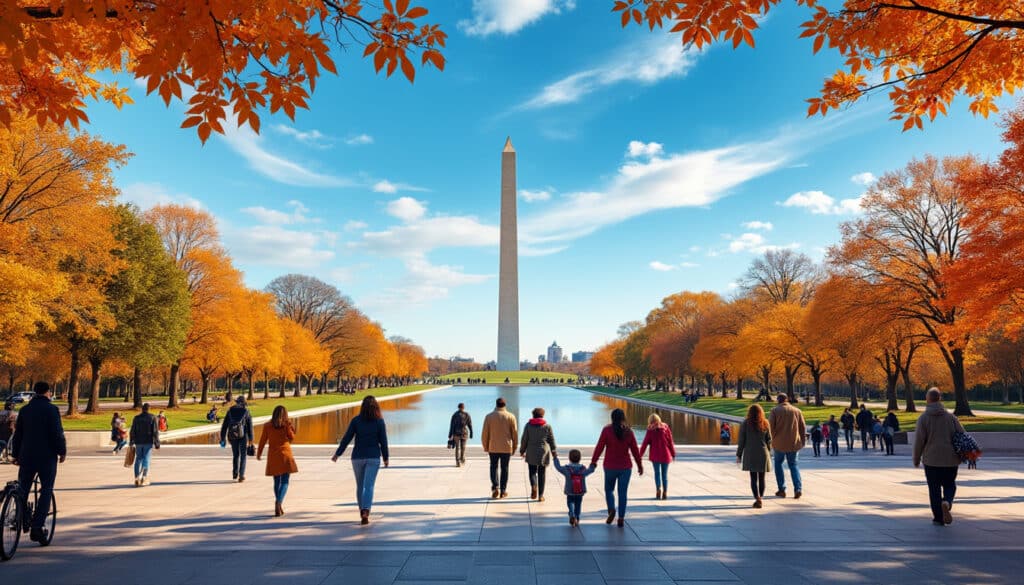
Climate & Weather in Washington DC
Washington D.C., the vibrant capital city of the United States, is known for its diverse weather patterns. From warm summers to chilly winters, the climate in Washington D.C. varies significantly throughout the year. Understanding the climate and weather patterns is…
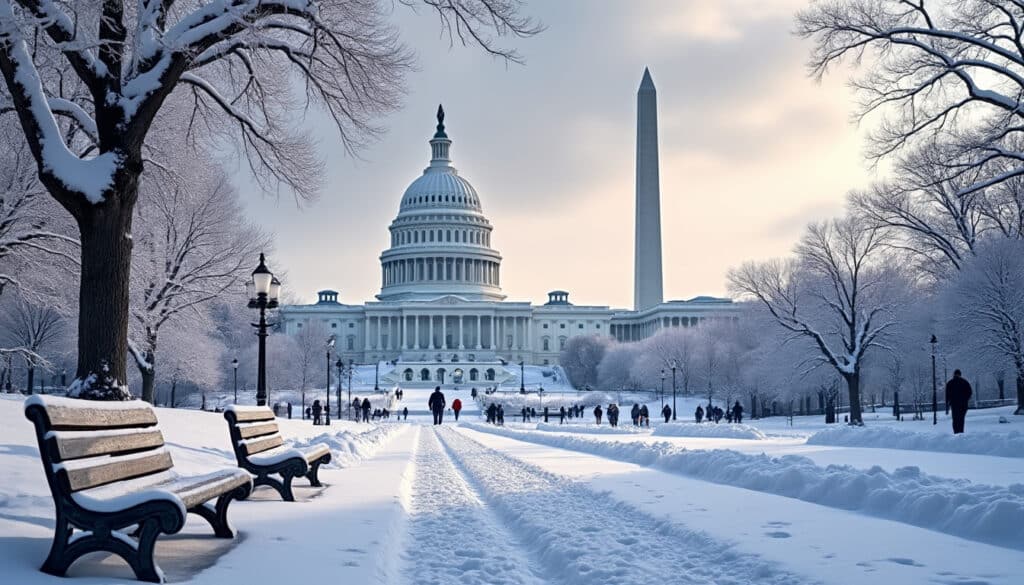
Washington D.C., the political heart of the United States, is no stranger to frigid winters. The capital city’s cold weather season brings a unique set of challenges and experiences, from bone-chilling winds that sweep across the Potomac to the enchanting…

Does it snow in Washington DC?
Washington D.C., the capital of the United States, is renowned for its historical landmarks and political significance. However, when winter arrives, one might wonder: does it snow in Washington D.C.? The answer is yes, and in fact, the city transforms…
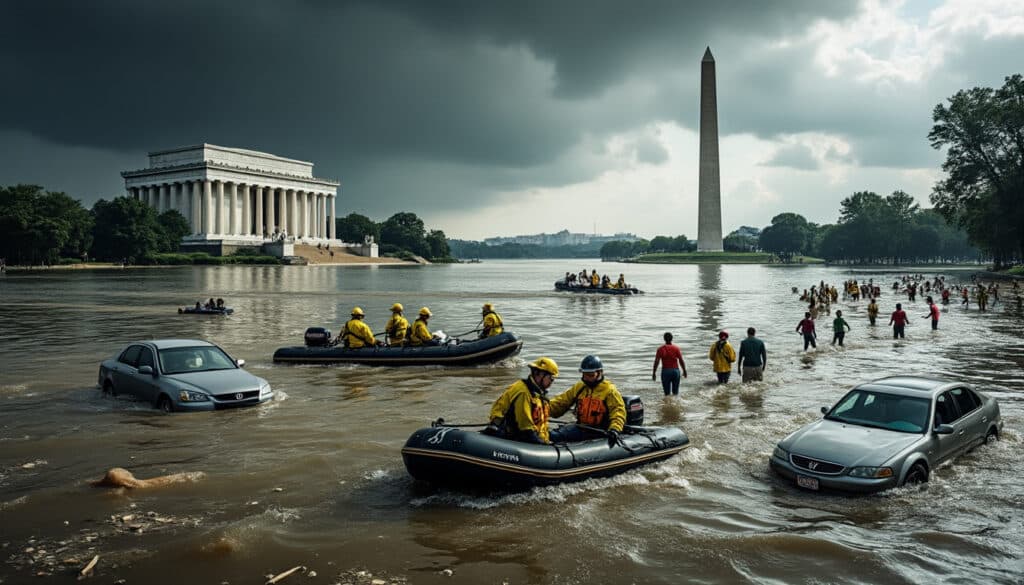
Flooding and natural risks in Washington DC
Washington D.C., a city dotted with historical landmarks, bustling government buildings, and scenic waterways, finds itself at the intersection of natural beauty and vulnerability. As climate patterns evolve, the nation’s capital is increasingly facing challenges posed by flooding. From the…
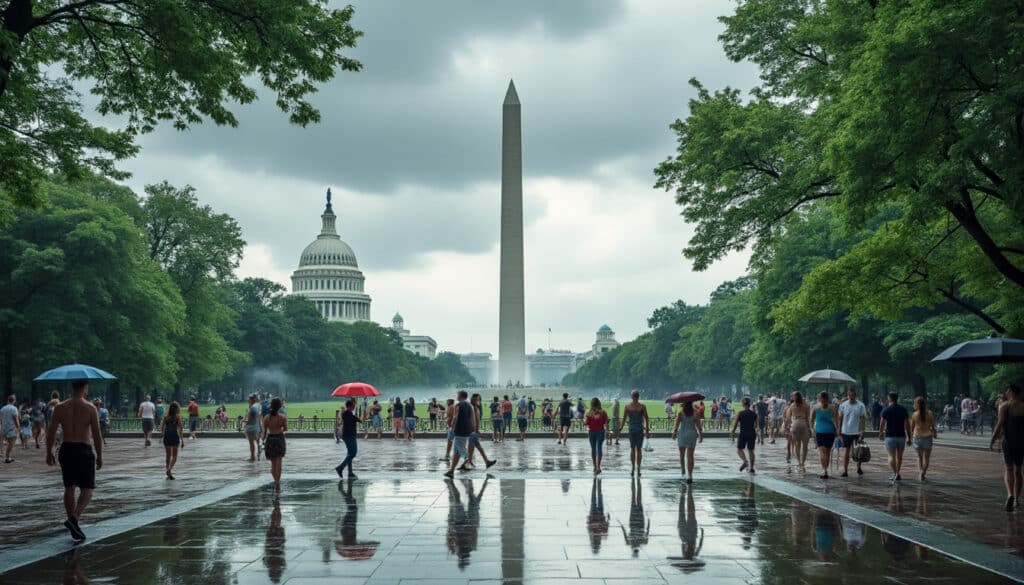
Washington, DC, a city known for its rich history and vibrant culture, is also famous for its distinctive weather patterns, particularly its humidity. Known to many as the seat of power in the United States, the capital city experiences unique…
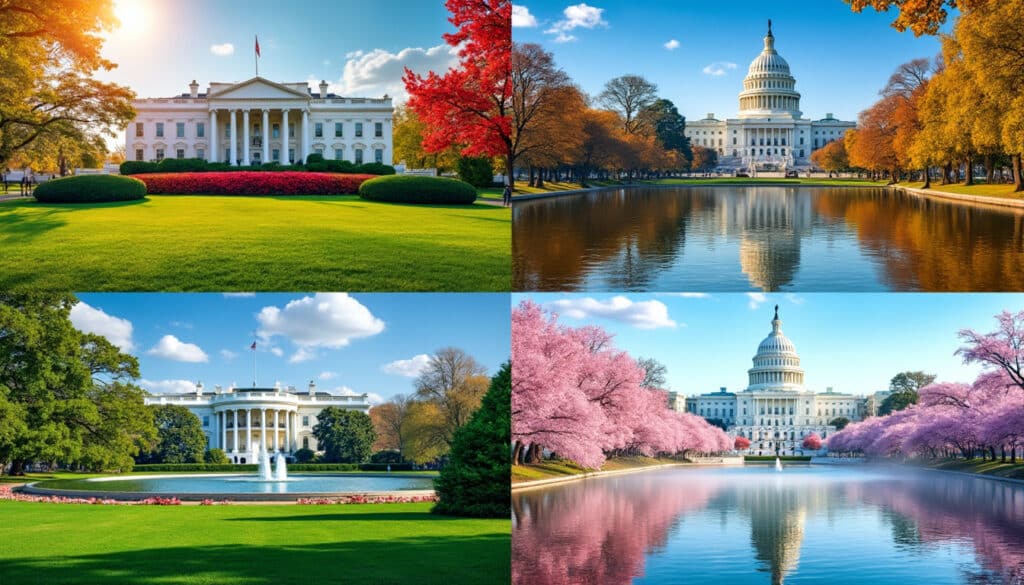
Is Washington DC warm throughout the year?
Washington, D.C., situated at the heart of the United States, is renowned not only for its historical monuments and political significance but also for its dynamic weather patterns. Although some may perceive it as consistently warm, the truth reveals a…
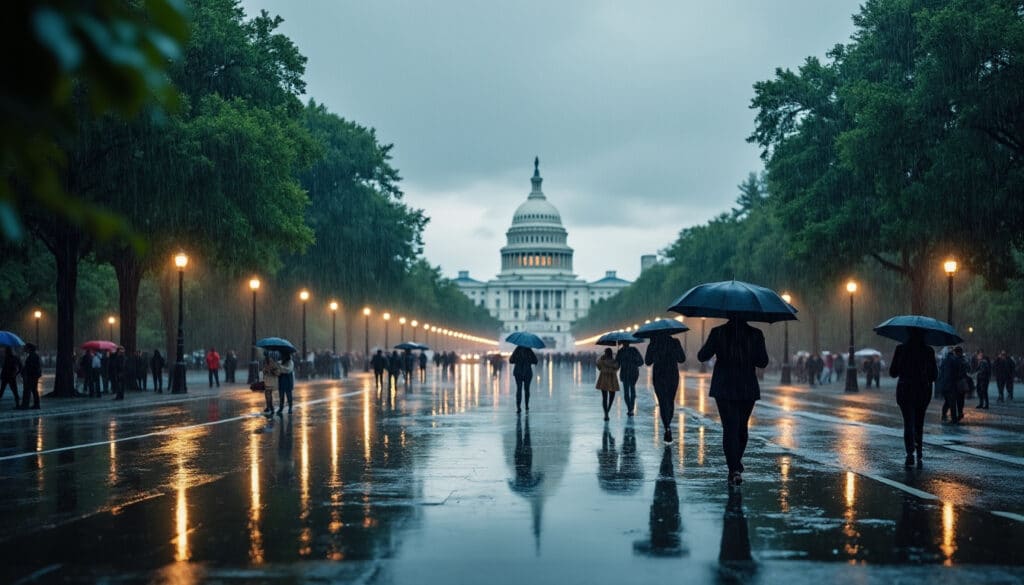
Rain and precipitation in Washington DC
Washington DC, the political heartbeat of the United States, is not only known for its rich history and iconic landmarks but also for its distinctive weather patterns, particularly rainfall and precipitation. This city experiences a wide range of weather conditions…
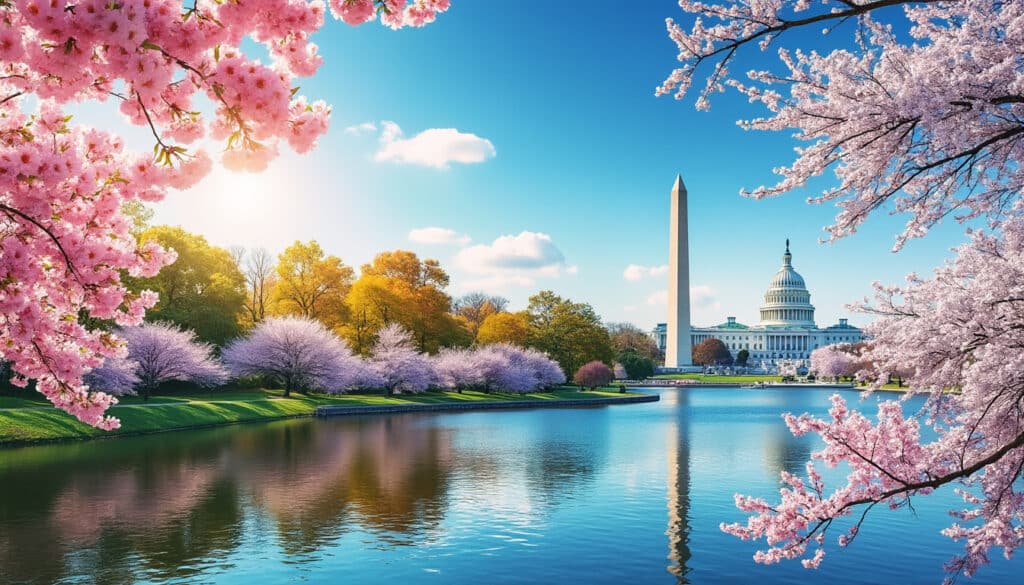
Washington, D.C. is renowned for being a city of significant historical value. However, its seasonal climate adds another layer of charm and complexity that captivates both tourists and residents alike. Situated in the eastern United States, Washington, D.C. experiences a…

Sunrise times in Washington DC
Sunrises in Washington DC are a daily spectacle that can enrich the start of any day. Whether you are planning to explore the iconic landmarks or simply enjoy a peaceful moment in the capital city, knowing the exact times can…
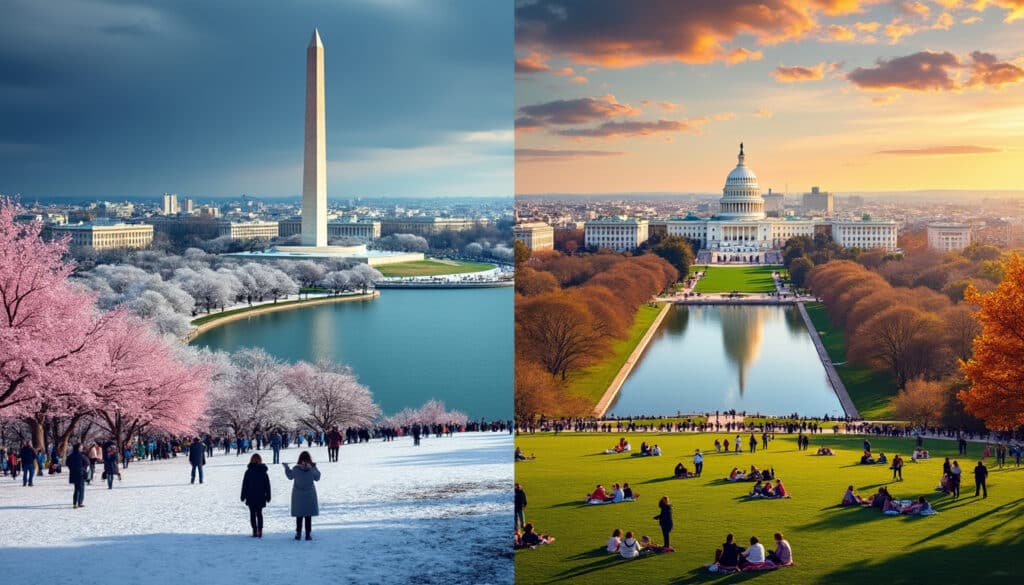
The weather in Washington, DC, is characterized by its distinct four seasons, each bringing its unique flavor to the capital city. From the sweltering summer heat to the brisk winter chills, the climate in Washington, DC, offers a variety of…
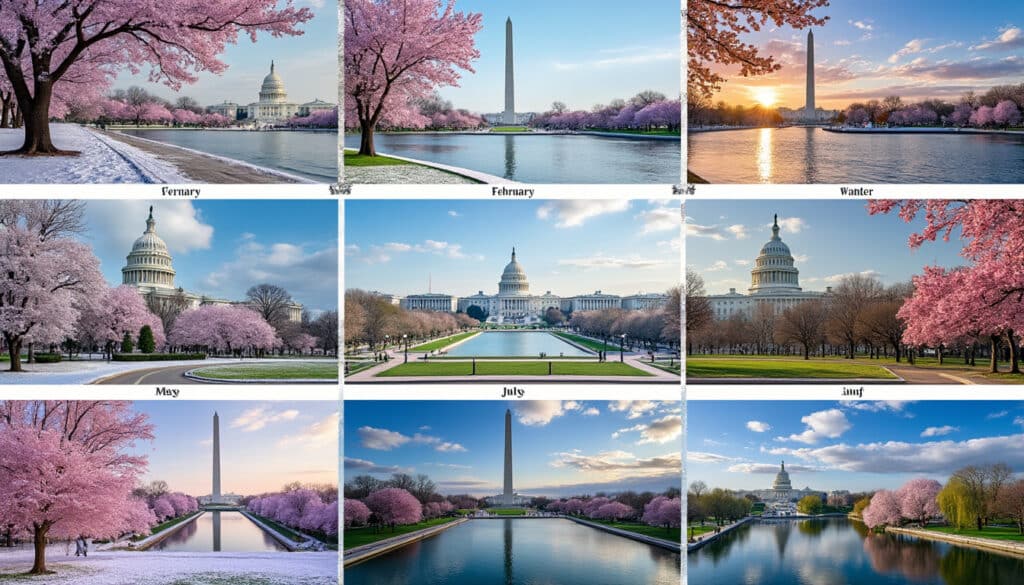
Weather in Washington DC by month
Understanding the weather patterns in Washington, D.C. is essential for both residents and visitors planning their trips to the capital city. With its distinct seasons, varying temperatures, and fluctuating weather conditions, Washington, D.C.’s climate offers a unique experience every month.…
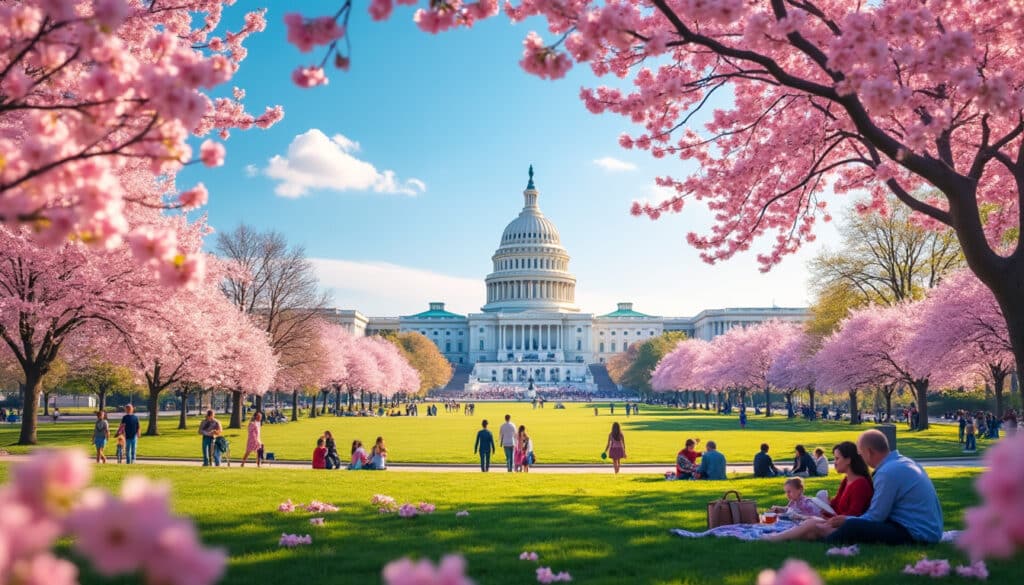
What is the weather like in Washington DC?
Washington, DC, the capital city of the United States, is known for its rich history and iconic landmarks. But what about its weather? The climate in Washington, DC fluctuates significantly across the year, offering a mix of seasons that can…

